Daewoo RN-422N.., RF-421N.., RF-422N.., RN-421N.. User Manual
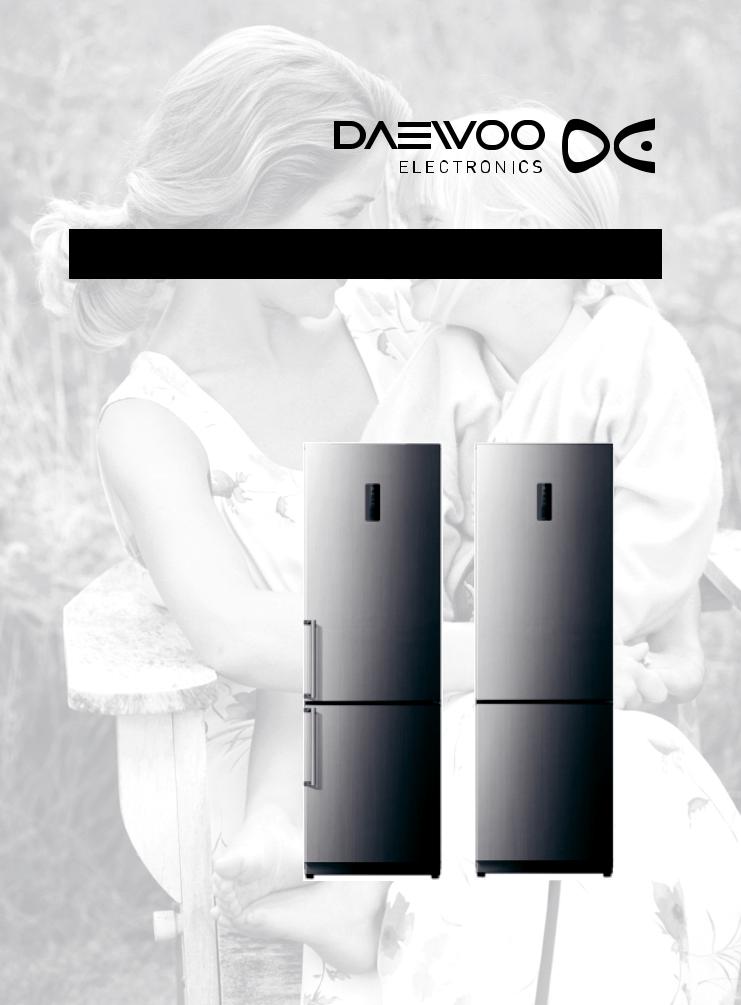
NO-Frost Combi-Refrigerator
RF-421N.. RF-422N.. RN-421N.. RN-422N..
Code : MRP3423-11
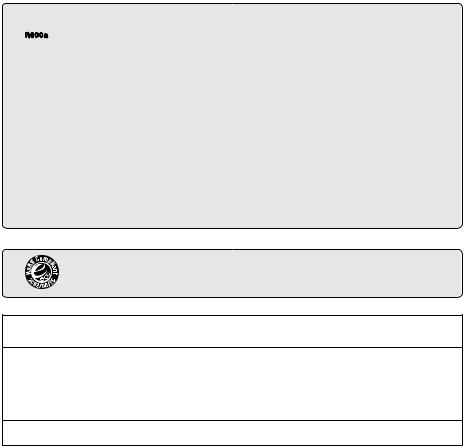
 SAFETY WARNING (R-600a Models Only)
SAFETY WARNING (R-600a Models Only)
This appliance contains a certain amount of isobutane refrigerant (R600a) a natural gas with high environmental compatibility that is, however, also combustible.
when transporting and installing the appliance, care should be taken to ensure that no parts of the refrigerating circuit are damaged.
Refrigerant squirting out of the pipes could ignite or cause an eye injury. If a leak is detected, avoid any naked flames or potential sources of ignition and air the room in which appliance is standing for several minutes.
 In order to avoid the creation of a flammable gas-air mixture if a leak in the refrigerating circuit occurs, the size of the room in which
In order to avoid the creation of a flammable gas-air mixture if a leak in the refrigerating circuit occurs, the size of the room in which 
 appliance may be sited depends on the amount of refrigerant used.
appliance may be sited depends on the amount of refrigerant used.
The room must be 1m3 in size for every 8g of R600a refrigrant inside the appliance. The amount of refrigerant is shown on the identification plate inside the appliance.
 Never start up an appliance showing any signs of damage. lf in doubt, consult your dealer.
Never start up an appliance showing any signs of damage. lf in doubt, consult your dealer.
RoHS (Directive 2002/95/EC) Compliant
This product is environmentally sound and sustainable free from Pb, Cd, Cr+6, Hg, PBBs and PBDEs restricted in accordance with the Directive.
Refrigerant Information(RF-421/422.. Models Only)
Refrigerant |
R-134a |
Charge |
0.095kg |
|
|
Global Warming Potential |
1300 |
Contains fluorinated greenouse gases covered by the Kyoto Protocol and is hermetically sealed.
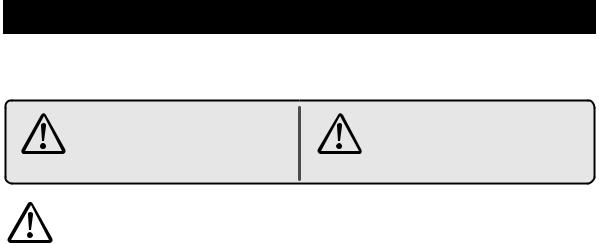
WARNING / SAFETY PRECAUTIONS
To avoid any risk of personal injury, material damage or incorrect use of the appliance, be sure to observe the following safety precautions. (After reading these owner’s instructions, please keep them in a safe place for reference). Remember to hand them over to any subsequent owner.
Indicates that a danger of death or serious injury exists
WARNING
WARNING
Do not plug several appliances into the same sockets.
• This could cause overheating and the risk of fire.
Keep the power plug away from the rear of the fridge / freezer.
• A damaged power plug may cause fire due to overheating.
Do not directly spray water inside or outside the fridge / freezer.
• There is a risk of fire or electric shock.
Do not spray water inside or outside the fridge / freezer.
• There is a risk of explosion or fire.
Do not bend the power cord excessively or place heavy articles on it.
•This constitutes a fire hazard. If the power cord is damaged, have it replaced immediately by the manufacturer, its service agent or a similarly qualified person.
Do not insert the power plug with wet hands.
• You may receive an electric shock.
Do not put a container filled with water on top of the appliance.
•If the water spills on to any electrical parts, it may lead to fire or electric shock.
Do not install the fridge / freezer in a damp place, where it could be splashed with water.
•Incorrect insulation of the electrical parts may cause an electric shock or fire.
Do not store volatile and flammable substances in the refrigerator.
•The storage of benzene, thinner, alcohol, ether, LP gas or other such substances may cause an explosion.
Do not disassemble, repair or alter the appliance.
•It may cause fire or abnormal operations, which may lead to injury.
Pull the power plug out of the socket before replacing the interior light in the refrigerator.
Indicates that risk of personal injury or material damage exists
CAUTION
•Otherwise, there is a risk of electric shock.
•Only the customer service may change the power cord and carry out any other repairs. Improper Installations and repairs may put the user at considerable risk.
Be sure to earth the appliance.
•Otherwise, it may cause material damage and electric shock.
If you wish to dispose of the fridge / freezer, throw it away after removing the door or its seals.
•In this way, it is not possible for a child to remain trapped inside it.
Keep ventilation openings in the appliance enclosure or in the built-in structure, clear of obstruction.
Do not use mechanical devices or other means to accelerate the defrosting process, other than those recommended by the manufacturer.
Do not damage the refrigerant circuit.
Do not use electrical appliances inside the food storage compartments of the appliance, useless they are of a type recommended by the manufacturer.
1
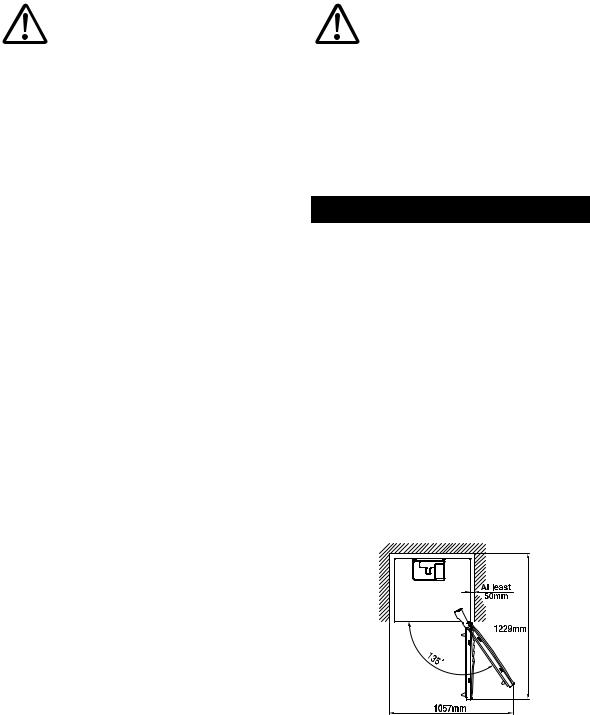
Caution |
Caution |
Do not store too much food in the appliance.
•When you open the door, an item may fall out and cause personal injury or material damage.
Do not put bottles or any kind of glass in the freezer.
• The container may break and cause personal injury.
If the wall socket is loose, do not insert the power plug.
• It may cause electric shock or fire.
Do not disconnect the power cord by pulling on it.
• You may disconnect a wire and cause a short circuit.
Do not store article on top of the appliance.
•When you open or close the door, the articles may fall and cause personal injury or material damage.
Do not store pharmaceutical products, scientific material or other temperature-sensitive products in the refrigerator.
•Products that require strict temperature controls must not be stored in the refrigerator.
Do not let a child hang from the door.
Do not touch any containers and food in the freezer with wet hands.
• It may cause frostbite.
Remove any foreign matter from the power plug pins.
• Otherwise, there is a risk of fire.
Do not insert your hand into the bottom area of appliance.
• Any sharp edges may cause personal injury.
After unplugging the appliance, wait for at least five minutes before plugging it again to the wall socket.
•Abnormal operation of the freezer may cause material damage.
If the appliance is not be used for a long period of time, pull out the power plug.
• Any deterioration in the insulation may cause fire.
Do not let children touch or play with the control panel on the front of the appliance.
•Do not allow children to play with this appliance.
•Do not stand or lean on the base panel, pull-out parts, door and so on.
•Repairs and maintenance of the appliance should only be performed by a qualified technician.
Incorrect repairs by an unqualified person are a potential source of danger that may have critical consequences for the user of the appliance.
•Never put ice cubes or ice lollies straight from thefreezer into your mouth.
(The low temperature may cause “cold burns”.)
2
The refrigerant used in fridge / freezers and the gases in the insulation material require special disposal procedures.
Ensure that none of the pipes on the back appliance are damaged prior to disposal.
DISPOSAL
Installing The Fridge / Freezer
1.Allow an adequate space and install the fridge/freezer on a firm, level floor.
•If the appliance is not level, there may be unusual noises and poor cooling.
2.Clean the fridge / Freezer
•Wipe and clean the inside and outside of appliance with a damp cloth.
3.Plug the fridge / freezer into a wall socket used exclusively by this appliance.
•This appliance must be properly earthed.
4.Place the food in the fridge / freezer.
•It is recommended that you wait for the appliance to cool for 3~4 hours before storing food in it.
5.Keep 60mm of space between the refrigerator and the back wall.
•Insufficient space causes the noise of vibration, weakening of refrigerating power and the waste of electricity.
•Overall space required in use.
Refer to drawing and dimension as below.
6.The electrical plug must be accessible without moving the set.
7.For ambient temperature below 10 °C, the perfect performance of our refrigerator can not be achieved.
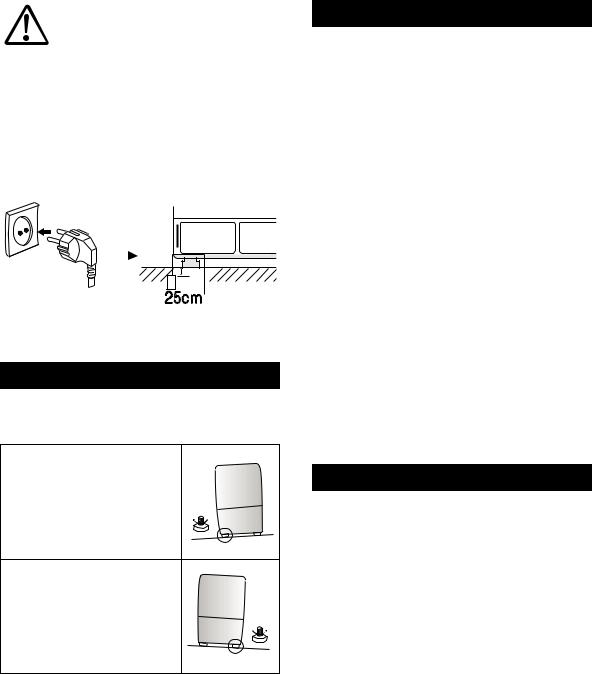
Caution
Use of an earthed socket exclusively
For the appliance :
•If you are using a socket with an earthed terminal, you do not require a separate earthed connection.
Use of a non-earthed socket :
•Connect the “earthed wire” to the steel plate and bury it at depth of at least 25cm in the ground.
LEVELING
If the front of the appliance is slightly higher than the rear, the door can be opened and closed more easily.
1.The appliance tilts down to the left.
Turn the left adjusting leg in the
direction of the arrow until the appliance is lever.
2.The appliance tilts down to the right.
Turn the right adjusting leg in the
direction of the arrow until the appliance is lever.
Preparing The Fridge / Freezer
To Prepare your appliance for use and check that it is running correctly, take the following steps.
1.Install removed all shelves and compartments during transport in the correct positions.
2.Clean the fridge / freezer and accessories to remove any dust that accumulated during packing and shipping.
3.The interior light should be turned on when the refrigerator door’s opened
4.Set the temperature control to the coldest temperature and let the refrigerator operate for one hour.
The freezer should get slightly chilled and the motor should run smoothly with a soft hum and no noise. Your fridge / freezer is operated by a compressor which
switches “on and off” to maintain the internal temperature. When compressor is new, it requires running in for a period of up to five months.
During this period, it may be slightly noisy.
This is quite normal and does not represent a fault.
5.Store food once the temperature in the refrigerator is sufficiently low. It takes a few hours after starting the refrigerator to reach the proper temperature.
If the appliance does not operate correctly, check the electricity supply.
If the problem persists, contact your dealer.
CE
This product has been designed, constructed and marketed in accordance with EEC directives 2006/95/CE, 2004/108/CE, and 96/57
Please read this manual carefully to ensure maximum satisfaction from your appliance. Keep the manual in a safe place for future reference.
For drawings referenced in the text below, see flap at back of the manual.
3
